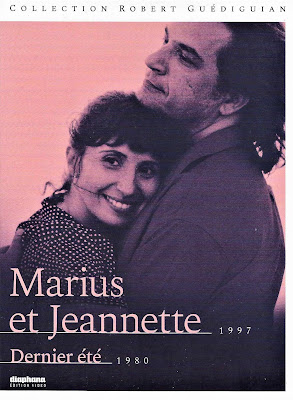(In September of this year, 2021, the Cinémathèque française showed a number of films by the almost forgotten Luc Moullet, who at the age of eighty-four is still very much alive. When the daily paper Libération interviewed him, living on the fifth floor of a block of flats, he said he's horrified of lifts, and measures the state of a visitor's health by counting the minutes between their initial intercom ring and the time they arrive at his door. In another article in the same paper, Moullet says "I'm not a very normal person. I always live a little at the side of reality". (My translation, and I shall continue to include this paragraph in any further posts on Mouillet as they are not only an introduction to his work, but also (surely) strong indications of an Asperger element.))
In 1972 Luc Moullet was the producer of a short by Jean-Pierre Letellier called Le Cabot, which involved the killing of a dog for the sake of the film. It was banned for two years, angering Moullet who considered the French love of dogs as on the same level as Indians' love of cows. Fourteen years later he got his revenge by making Empire de Médor, a wild attack on dog worship.
The film begins in Asnières-sur-Seine, where in 1899 the author Georges Harmois and the feminist journalist Marguerite Durand established a business, a Cimetière pour chiens et chats, which now contains, among many others, the remains of Rintintin and Clément, Michel Houellebecq's dog.* Moullet being an absurdist, his sensibilities obviously don't stretch to the absurdity of treating animals as inferior beings, which is evidently a serious error on his part, but future generations are now fortunately learning from the errors of the past and have moved on. The fact that, as the narrator states either correctly or in error, the amount of money the French spend on dogs is the same as the Gross National Product of Senegal is entirely irrelevant: almost anything can be proved by juggling with figures, and comparing one country with another in such a way is meaningless.
However, Moullet makes some valid points, such as the useless and wasteful spending on the grooming and beautifying of dogs, the exhibitions, etc, although I'm pretty certain the dogshit machines have now completely disappeared in favour of poop scooping. But this revenge documentary is dangerously flawed: we can hardly expect a balanced argument under the circumstances, but dogs are not only invaluable as substitutes for human partners (and how many humans are anything like as faithful?), they are invaluable to such incapacitated people as the blind, and their superhuman powers are also invaluable to police forces. In his lust for revenge, above all in his lust to sacrifice a dog for a film, a highly developed creature for the sake of art, Moullet lost the plot. Which is a huge pity as he's a great film director.
*The narrator says that this is the only paying cemetery, which is untrue: possibly things were different in 1986, but at the time of writing the private cemetery of Picpus charges too.



























